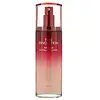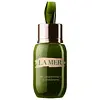What's inside
What's inside
 Key Ingredients
Key Ingredients

 Benefits
Benefits

 Concerns
Concerns

 Ingredients Side-by-side
Ingredients Side-by-side

Water
Skin ConditioningGlycerin
HumectantDimethicone
EmollientHydrogenated Polydecene
EmollientCyclopentasiloxane
EmollientMethylpropanediol
SolventNiacinamide
SmoothingButylene Glycol
Humectant1,2-Hexanediol
Skin ConditioningChondrus Crispus Extract
Skin ConditioningHydroxyacetophenone
AntioxidantTrehalose
HumectantAmmonium Acryloyldimethyltaurate/Vp Copolymer
Sodium Stearoyl Glutamate
CleansingCentella Asiatica Extract
CleansingFicus Carica Fruit Extract
HumectantSodium Hyaluronate
HumectantPolysorbate 20
EmulsifyingSqualane
EmollientParfum
MaskingAdenosine
Skin ConditioningCetyl Ethylhexanoate
EmollientNeopentyl Glycol Diheptanoate
EmollientArctium Lappa Root Extract
Skin ConditioningHydrogenated Lecithin
EmulsifyingHydrogenated Phosphatidylcholine
EmulsifyingAspergillus Ferment
Skin ConditioningCarnosine
Skin ConditioningPolyglyceryl-10 Myristate
Skin ConditioningLactococcus Ferment Lysate
Skin ConditioningCetearyl Alcohol
EmollientPerilla Ocymoides Seed Extract
AntioxidantPolyglyceryl-2 Stearate
EmulsifyingStearic Acid
CleansingCarthamus Tinctorius Seed Oil
MaskingOenothera Biennis Oil
EmollientCeramide NP
Skin ConditioningPolyquaternium-51
Skin ConditioningBeta-Glucan
Skin ConditioningHydrolyzed Hyaluronic Acid
HumectantPolyglutamic Acid
Skin ConditioningLysolecithin
EmulsifyingHyaluronic Acid
HumectantHydrolyzed Sodium Hyaluronate
Skin ConditioningAcetyl Glutamine
Skin ConditioningPotassium Hyaluronate
Skin ConditioningHydroxypropyltrimonium Hyaluronate
Sodium Hyaluronate Crosspolymer
HumectantCoral Powder
AbrasiveHydrolyzed Collagen
EmollientSodium Acetylated Hyaluronate
HumectantSodium Chloride
MaskingPhenylpropanol
MaskingLevulinic Acid
PerfumingSodium Levulinate
Skin ConditioningWater, Glycerin, Dimethicone, Hydrogenated Polydecene, Cyclopentasiloxane, Methylpropanediol, Niacinamide, Butylene Glycol, 1,2-Hexanediol, Chondrus Crispus Extract, Hydroxyacetophenone, Trehalose, Ammonium Acryloyldimethyltaurate/Vp Copolymer, Sodium Stearoyl Glutamate, Centella Asiatica Extract, Ficus Carica Fruit Extract, Sodium Hyaluronate, Polysorbate 20, Squalane, Parfum, Adenosine, Cetyl Ethylhexanoate, Neopentyl Glycol Diheptanoate, Arctium Lappa Root Extract, Hydrogenated Lecithin, Hydrogenated Phosphatidylcholine, Aspergillus Ferment, Carnosine, Polyglyceryl-10 Myristate, Lactococcus Ferment Lysate, Cetearyl Alcohol, Perilla Ocymoides Seed Extract, Polyglyceryl-2 Stearate, Stearic Acid, Carthamus Tinctorius Seed Oil, Oenothera Biennis Oil, Ceramide NP, Polyquaternium-51, Beta-Glucan, Hydrolyzed Hyaluronic Acid, Polyglutamic Acid, Lysolecithin, Hyaluronic Acid, Hydrolyzed Sodium Hyaluronate, Acetyl Glutamine, Potassium Hyaluronate, Hydroxypropyltrimonium Hyaluronate, Sodium Hyaluronate Crosspolymer, Coral Powder, Hydrolyzed Collagen, Sodium Acetylated Hyaluronate, Sodium Chloride, Phenylpropanol, Levulinic Acid, Sodium Levulinate
Cyclopentasiloxane
EmollientAlgae Extract
EmollientGlycerin
HumectantDimethicone
EmollientPolysilicone-11
Isononyl Isononanoate
EmollientDimethicone/PEG-10/15 Crosspolymer
Cyclohexasiloxane
EmollientSesamum Indicum Seed Oil
EmollientMedicago Sativa Seed Powder
Skin ConditioningHelianthus Annuus Seedcake
AbrasivePrunus Amygdalus Dulcis Seed Meal
AbrasiveEucalyptus Globulus Leaf Oil
PerfumingSodium Gluconate
Skin ConditioningCopper Gluconate
Skin ConditioningCalcium Gluconate
HumectantMagnesium Gluconate
Skin ConditioningZinc Gluconate
Skin ConditioningTocopheryl Succinate
AntioxidantNiacin
SmoothingSesamum Indicum Seed Powder
Skin ConditioningWater
Skin ConditioningDimethicone Crosspolymer
Emulsion StabilisingLaminaria Ochroleuca Extract
Skin ConditioningTriticum Vulgare Flour Lipids
Skin ConditioningCitrus Aurantifolia Peel Extract
CleansingCrithmum Maritimum Extract
Skin ConditioningAlteromonas Ferment Extract
Skin ConditioningChlorella Vulgaris Extract
Skin ConditioningYeast Extract
Skin ConditioningCholesterol
EmollientLinoleic Acid
CleansingTocopherol
AntioxidantTetraacetylphytosphingosine
Skin ConditioningCaprylic/Capric Triglyceride
MaskingRosmarinus Officinalis Leaf Oil
MaskingOcimum Basilicum Oil
MaskingLavandula Angustifolia Oil
MaskingLavandula Hybrida Oil
EmollientDipropylene Glycol
HumectantAlcohol Denat.
AntimicrobialSodium Citrate
BufferingParfum
MaskingEugenol
PerfumingLimonene
PerfumingLinalool
PerfumingBHT
AntioxidantPhenoxyethanol
PreservativePotassium Sorbate
PreservativeCyclopentasiloxane, Algae Extract, Glycerin, Dimethicone, Polysilicone-11, Isononyl Isononanoate, Dimethicone/PEG-10/15 Crosspolymer, Cyclohexasiloxane, Sesamum Indicum Seed Oil, Medicago Sativa Seed Powder, Helianthus Annuus Seedcake, Prunus Amygdalus Dulcis Seed Meal, Eucalyptus Globulus Leaf Oil, Sodium Gluconate, Copper Gluconate, Calcium Gluconate, Magnesium Gluconate, Zinc Gluconate, Tocopheryl Succinate, Niacin, Sesamum Indicum Seed Powder, Water, Dimethicone Crosspolymer, Laminaria Ochroleuca Extract, Triticum Vulgare Flour Lipids, Citrus Aurantifolia Peel Extract, Crithmum Maritimum Extract, Alteromonas Ferment Extract, Chlorella Vulgaris Extract, Yeast Extract, Cholesterol, Linoleic Acid, Tocopherol, Tetraacetylphytosphingosine, Caprylic/Capric Triglyceride, Rosmarinus Officinalis Leaf Oil, Ocimum Basilicum Oil, Lavandula Angustifolia Oil, Lavandula Hybrida Oil, Dipropylene Glycol, Alcohol Denat., Sodium Citrate, Parfum, Eugenol, Limonene, Linalool, BHT, Phenoxyethanol, Potassium Sorbate
 Reviews
Reviews

Ingredients Explained
These ingredients are found in both products.
Ingredients higher up in an ingredient list are typically present in a larger amount.
Cyclopentasiloxane, or D5, is a silicone used to improve texture of products and trap moisture.
D5 is considered lightweight and volatile. Volatile means it evaporates quickly after application. Once evaporated, D5 leaves a thin barrier that helps keep skin hydrated.
It is also an emollient. Emollients help soften the skin and prevent water loss. Silicones create a silky texture in products. D5 helps other ingredients become more spreadable.
Studies show D5 is safe to use in skincare products. We recommend speaking with a skincare professional if you have concerns.
Learn more about CyclopentasiloxaneDimethicone is a type of synthetic silicone created from natural materials such as quartz.
What it does:
Dimethicone comes in different viscosities:
Depending on the viscosity, dimethicone has different properties.
Ingredients lists don't always show which type is used, so we recommend reaching out to the brand if you have questions about the viscosity.
This ingredient is unlikely to cause irritation because it does not get absorbed into skin. However, people with silicone allergies should be careful about using this ingredient.
Note: Dimethicone may contribute to pilling. This is because it is not oil or water soluble, so pilling may occur when layered with products. When mixed with heavy oils in a formula, the outcome is also quite greasy.
Learn more about DimethiconeGlycerin is already naturally found in your skin. It helps moisturize and protect your skin.
A study from 2016 found glycerin to be more effective as a humectant than AHAs and hyaluronic acid.
As a humectant, it helps the skin stay hydrated by pulling moisture to your skin. The low molecular weight of glycerin allows it to pull moisture into the deeper layers of your skin.
Hydrated skin improves your skin barrier; Your skin barrier helps protect against irritants and bacteria.
Glycerin has also been found to have antimicrobial and antiviral properties. Due to these properties, glycerin is often used in wound and burn treatments.
In cosmetics, glycerin is usually derived from plants such as soybean or palm. However, it can also be sourced from animals, such as tallow or animal fat.
This ingredient is organic, colorless, odorless, and non-toxic.
Glycerin is the name for this ingredient in American English. British English uses Glycerol/Glycerine.
Learn more about GlycerinParfum is a catch-all term for an ingredient or more that is used to give a scent to products.
Also called "fragrance", this ingredient can be a blend of hundreds of chemicals or plant oils. This means every product with "fragrance" or "parfum" in the ingredients list is a different mixture.
For instance, Habanolide is a proprietary trade name for a specific aroma chemical. When used as a fragrance ingredient in cosmetics, most aroma chemicals fall under the broad labeling category of “FRAGRANCE” or “PARFUM” according to EU and US regulations.
The term 'parfum' or 'fragrance' is not regulated in many countries. In many cases, it is up to the brand to define this term.
For instance, many brands choose to label themselves as "fragrance-free" because they are not using synthetic fragrances. However, their products may still contain ingredients such as essential oils that are considered a fragrance by INCI standards.
One example is Calendula flower extract. Calendula is an essential oil that still imparts a scent or 'fragrance'.
Depending on the blend, the ingredients in the mixture can cause allergies and sensitivities on the skin. Some ingredients that are known EU allergens include linalool and citronellol.
Parfum can also be used to mask or cover an unpleasant scent.
The bottom line is: not all fragrances/parfum/ingredients are created equally. If you are worried about fragrances, we recommend taking a closer look at an ingredient. And of course, we always recommend speaking with a professional.
Learn more about ParfumWater. It's the most common cosmetic ingredient of all. You'll usually see it at the top of ingredient lists, meaning that it makes up the largest part of the product.
So why is it so popular? Water most often acts as a solvent - this means that it helps dissolve other ingredients into the formulation.
You'll also recognize water as that liquid we all need to stay alive. If you see this, drink a glass of water. Stay hydrated!
Learn more about Water